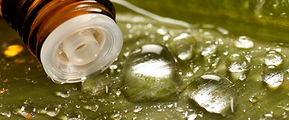
THE HISTORY OF CLOVE OIL
OUR SOURCE OF BETA-CARYOPHYLLENE
Cloves get their name from the French word clou which translates to nail, a fitting name given the physical appearance of a clove. They are one of “The Big Four” spices, which also include cinnamon, nutmeg and pepper. Historians believe that clove was one of the first spices to be traded, based on discovering cloves in ancient ships that were dated as far back as 1721 BC. Cloves are found in ancient Roman text and they are documented in Chinese history as early as 226 BC, where the Emperor commanded that anyone wishing to speak to him chew on a clove beforehand to eliminate bad breath. Cloves were introduced to Europe by Arab traders in the fourth century and they were used in the Middle Ages to cover the sour and bitter tastes of food that was poorly preserved.
The clove tree is native to the Malucca Islands, a group of islands that is now part of Indonesia. Some historians believe that one of the islands, named Amboina, is most likely the exact spot of origin for the tree. The islands were first colonized by the Portuguese in the 1500s but later fell to the Dutch in the 1600s. During the 16th and 17th centuries, clove was one of the most precious spices, along with nutmeg and can be found at the center of expeditions and even battles. In 1522, famous explorer Ferdinand Magellan’s ship landed in Spain after he was killed in the Philippines at the Battle of Mactan. The ship was full of nutmeg and cloves and the Spaniards took full advantage of trading the clove, which was worth more than its weight in gold. When the Dutch reached the Malucca Islands in 1605, they took control from the Portuguese and began an attempt to monopolize the clove trade business.
Their attempt was so serious that they actually destroyed clove trees that were not part of their territory. This caused conflict as it was tradition to plant clove trees to commemorate the birth of a child. By destroying the tree, the symbolism between the tree and child was destroyed. The native people of the Malucca Islands grew to despise the Dutch presence in their land.
By the 18th century, clove trees could be found throughout many other countries and islands, including Zanzibar, Madagascar, Brazil, Mauritius, Ternate, Tidor and Tanzania. With so many joining in on the production of clove, the rarity of the spice dropped along with the prices and for the first time the spice could be enjoyed by people in all society classes, for both culinary and medicinal purposes. It has been used in Asia as a cooking spice for over two thousand years and has deep roots in India where it was used to heal cavities.
Where Clove Trees Have Been Grown
Today, cloves are grown in Zanzibar, Indonesia, Madagascar, India, Pakistan and Brazil. The clove tree, a type of evergreen tree that grows up to forty feet in height, does best in areas where it is near the coast. It needs rich soil that has thorough drainage and needs to be fairly shaded during the first few years of growth. After the initial growing phase, the trees do best in full sun. One of the dangers to these trees is that as they grow along the coast they are often susceptible to strong winds which can inhibit proper growth or even break the trees. When grown commercially, windbreaks are often installed to keep the trees safe.
Indonesia produces the most cloves in the world, growing nearly half of all of the world’s cloves. Clove trees do not start producing the spice until they are at least five years old but will continue to produce for at least another twenty years. The oldest known clove tree is estimated to be over four hundred years old. The tree is closely related to the Eucalyptus and Tea Tree, which all share the same anti-bacterial properties.
Clove Oil Today
Clove oil today has many of the same medicinal uses that it has for centuries. One of the main ways that it is used is in dentistry though the way that it is used has changed. At one time, clove oil was used to numb and disinfect specific areas of the gums where an injection containing anesthetic was needed to prepare a patient for a dental procedure. It was also mixed in with temporary tooth filling resin where it would help to reduce pain and also disinfect the nerve tissue, helping to prepare the tooth for a permanent filling.
For years, many dentists recommended that clove be used at home after dental procedures to disinfect open wounds and to help with any post-surgical discomfort. Today, clove oil’s main use in dentistry is to add flavor to mouth rinses and numbing gels. As technology advances, many other numbing options are available along with disinfectants that have caused clove oil to disappear from dental offices. However, it is still a great home remedy should you find yourself with tooth pain and unable to get into a dental office for a day or two.
It is also used for its strong antioxidant content, which helps to boost the immune system and fight off infections. It’s great for eliminating fungal infections and alleviating muscle ache pains. It can be used around the house to remove mold and deter insects. By diffusing the oil through the air, air quality can be improved and you may benefit from the mental benefits of clove oil, including improved memory, lessened anxiety and improved overall mood. Cloves will always be known for one of their original uses, as a spice, and are often used whole to flavor hams or can be used ground up or in oil form to give pies, candies and breads a wonderful flavor.
Studies are continuous on the oil, which focus on its capability to help with myriad ailments.

